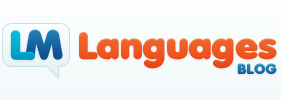More language maps
Posted on January 31st, 2010by
In English, Indigenous languages, Spanish, Technology | Leave a Comment »
I’ve been in Deep South of America for the past month, and it’s definitely been interesting to be surrounded by a range of southern accents. Some are so thick I can only nod and smile in response to comments!
It’s also been interesting to learn more about the many different languages people may not know are spoken in the US. Whilst Spanish is prevalent (even here in South Carolina, many miles from the Mexican border), a lot of minority languages are also spoken, including the many Native American tongues.
Whilst I’ll be looking at these further in future posts, for the moment I’d like to share this – a linguistic map of the states, showing indigenous languages, dialects and regional accents. You can also view maps of Canada, Asia, Europe and Africa. Incredible.

 For lots of people learning a new language, practicing speaking and listening is the hardest part. Finding someone to interact with, who understands your level and can help you improve, is difficult. You may make new friends in a class, but they may not be available when you want to practice.
For lots of people learning a new language, practicing speaking and listening is the hardest part. Finding someone to interact with, who understands your level and can help you improve, is difficult. You may make new friends in a class, but they may not be available when you want to practice. Following up on yesterday’s post about industry-specific terminology, I thought I’d share with you this fun application.
Following up on yesterday’s post about industry-specific terminology, I thought I’d share with you this fun application. In my last post I wrote about The Atlas of True Names, which renamed places according to their etymology.
In my last post I wrote about The Atlas of True Names, which renamed places according to their etymology.